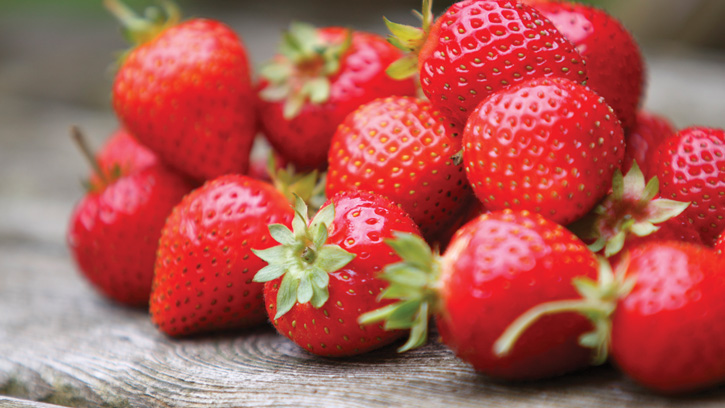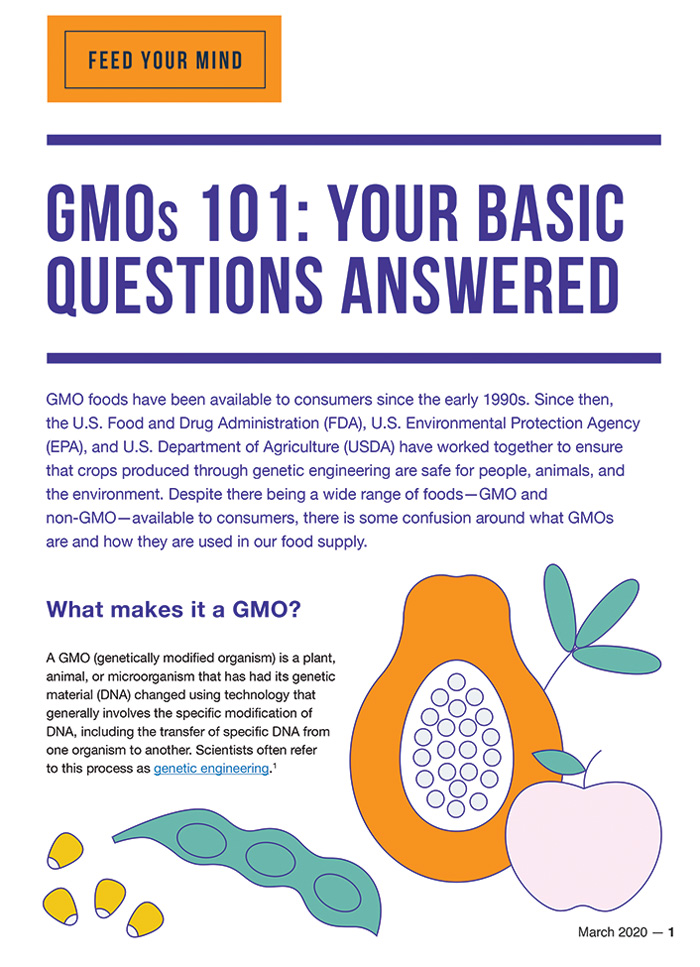Boosting strawberry flavor; Reducing age-related muscle loss
NEWS
Boosting strawberry flavor
Strawberries are a popular summer fruit, but the flavor of commercial strawberries often leaves room for improvement. To test the hypothesis that sensory quality could be manipulated using postharvest light treatments, a study published in the Journal of Food Science subjected individual detached fruits representing two different cultivars to a 24-hour treatment of 100 µmol m−2 s−1 blue LED light. A control was kept in complete darkness.
Following treatment, human trials were conducted to analyze the samples for flavor volatiles, sugars, acids, firmness, and sensory differences. Fruits were rated for overall liking, texture, sweetness, sourness, and overall strawberry flavor intensity on the sensory and hedonic versions of the global intensity scale. A positive treatment effect was observed for “Strawberry Festival” fruit for the overall liking rating. A triangle test revealed a significant treatment effect, as light-treated fruit tested higher in many flavor volatiles, including those known to contribute to sweetness in strawberries. In addition, levels of several volatiles were consistently higher in the treated fruit across all four harvests: acetic acid hexyl ester, butanoic acid octyl ester, methyl isovalerate, and pentanoic acid ethyl ester.
The results indicate that the sensory quality of strawberry fruits can be improved using an inexpensive and noninvasive light treatment applied during transport or storage. This concept could also be extended into other realms of storage, such as residential and commercial refrigeration, to further increase quality.
FDA gives the facts on Nutrition Facts
In an effort to help consumers maintain healthy dietary practices, The U.S. Food and Drug Administration (FDA) launched an information campaign about the new Nutrition Facts label. Using the tagline “What’s In It For You?” the initiative focuses on educating the general public as well as helping individuals at increased risk of nutrition-related chronic diseases, including obesity.
“This campaign highlights that the new Nutrition Facts label has been designed to assist consumers in making better informed food choices,” said Susan Mayne, director of the FDA’s Center for Food Safety and Applied Nutrition, in a press release. “If a consumer wants to know how many calories there are in a serving, that information is now highlighted. If a consumer wants to choose a food with more vitamin D or less added sugars, that information is now right there on the label.”
Among the most distinguishing characteristics of the redesign—the first in more than 20 years—are the bold listings for serving sizes and calorie counts. Additional changes include new listings for added sugars, vitamin D, and potassium, as well as dual columns listing nutritional facts for a single serving and the entire package on goods with 2–3 servings that could reasonably be consumed at one time.
Most manufacturers with $10 million or more in annual food sales were required to begin using the new label by January 2020. Those with less than $10 million in annual food sales have until Jan. 1, 2021.
Reducing age-related muscle loss
It’s well known that protein is one of the keys to building muscle, but when it comes to maintaining muscle mass as we age, the amount, pattern, and source of protein is also important.
Researchers at the University of Birmingham looked at the dietary patterns of young, middle-aged, and older individuals. Study participants were asked to complete a food diary over a three-day period. While the majority of individuals across all three groups met or exceeded current national guidelines (RDA) for protein intake, the protein intake and distribution across daily meals and snacks varied widely. Most noticeably, the team found that older people, compared with young and middle-aged individuals, were more likely to eat a lower-quality protein source, such as bread, at lunchtime.
Since the body’s mechanisms for producing new muscle are less efficient in older people, they need to eat more protein to get the same response as younger people. The researchers concluded that the study results offer compelling evidence for revised nutritional guidelines that could help older people adopt habits that spread consumption of good quality proteins across all meals.
Eating sweets can undo plant-based diet benefits
Following a plant-based diet has been shown to confer health benefits, but a recent study carried out by researchers at the University of Athens found that plant-based eaters who frequently consumed sweets, refined grains, and juice showed no heart health benefit compared with those who did not eat a plant-based diet.
During the study, the eating behaviors of more than 2,000 Greek adults were followed over a 10-year period, with participants completing detailed food frequency surveys at the beginning of the study, after five years, and after 10 years. The findings confirmed the cardiovascular benefits to be gained from reduced consumption of animal-based products—especially less-healthful ones such as processed meat—and increased consumption of healthy plant-based foods.
When the researchers looked at participants who followed a more plant-based diet, they discovered that only those who ate a healthy version consisting of such foods as fruits, vegetables, whole grains, nuts, and legumes reaped cardiovascular benefits. Participants who consumed sweets, juices, and refined grains did not enjoy the same benefits. In addition, women showed a more dramatic increase in heart disease risk when eating an unhealthy plant-based diet and a more dramatic reduction in risk when eating a healthy plant-based diet compared with men in the same categories.
Lead researcher Demosthenes Panagiotakos believes the establishment of clear nutrition guidelines that spell out specific types of foods and recommended portions can be a useful tool in preventing cardiovascular disease.
Educating consumers about GMOs
To help consumers better understand GMOs, the U.S. Food and Drug Administration (FDA) is launching the “Feed Your Mind” initiative in collaboration with the U.S. Environmental Protection Agency and the U.S. Department of Agriculture. The aim of the initiative is to answer the most common health and safety questions consumers have about GMOs, including what they are, how and why they are made, and how they are regulated.
“While foods from genetically engineered plants have been available to consumers since the early 1990s and are a common part of today’s food supply, there are a lot of misconceptions about them,” said FDA Commissioner Stephen M. Hahn, in a press release. “This initiative is intended to help people better understand what these products are and how they are made.” Hahn added that genetic engineering has led to the development of new plants that are resistant to insects and diseases, products with improved nutritional profiles, and produce that does not brown or bruise easily.
“Feed Your Mind” is launching in phases. The first set of resources comprises a new website, fact sheets, infographics, and videos. Additional materials—including a supplementary science curriculum for high schools, resources for health professionals, and additional consumer materials—will be released later in 2020 and 2021.






